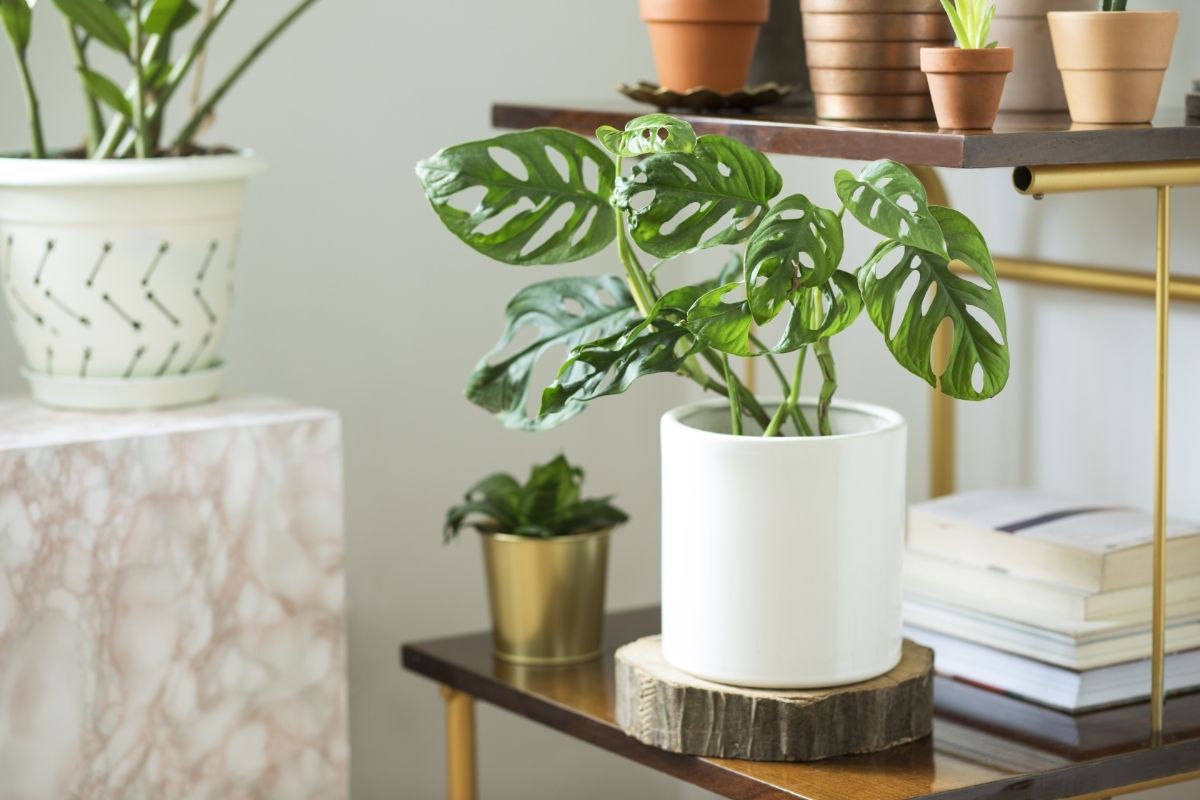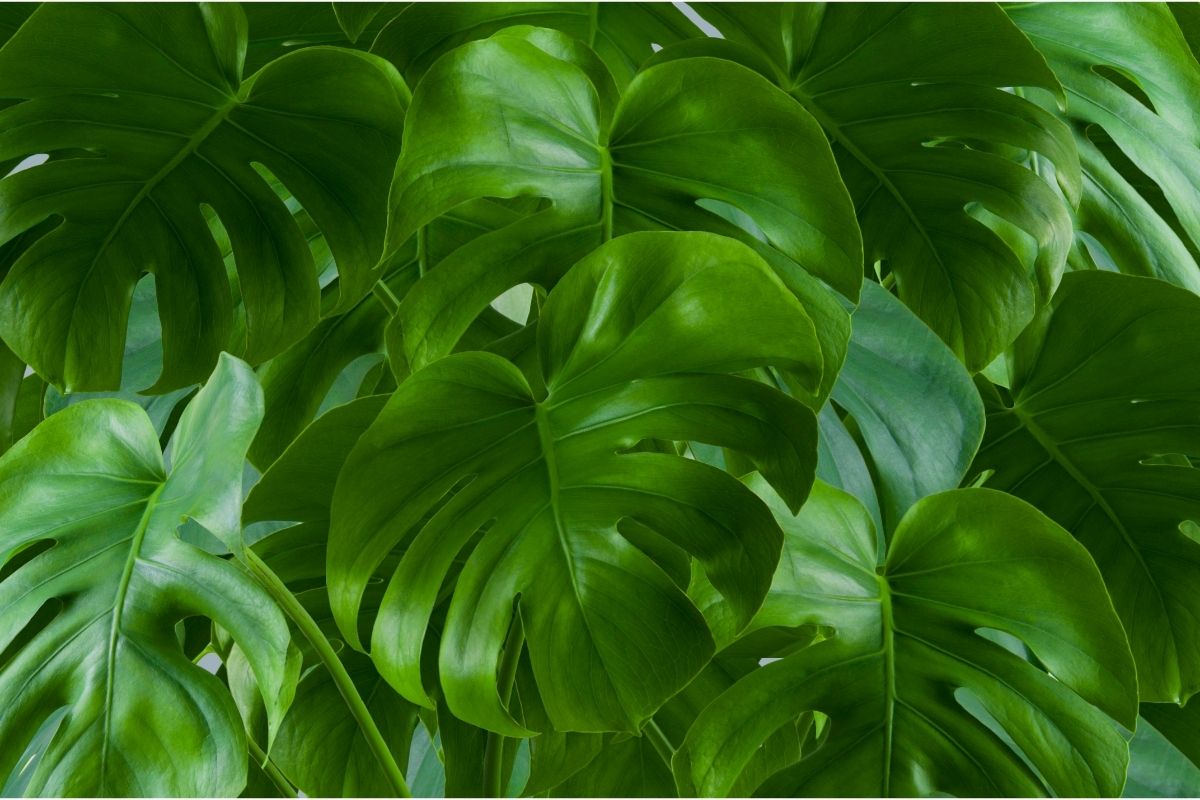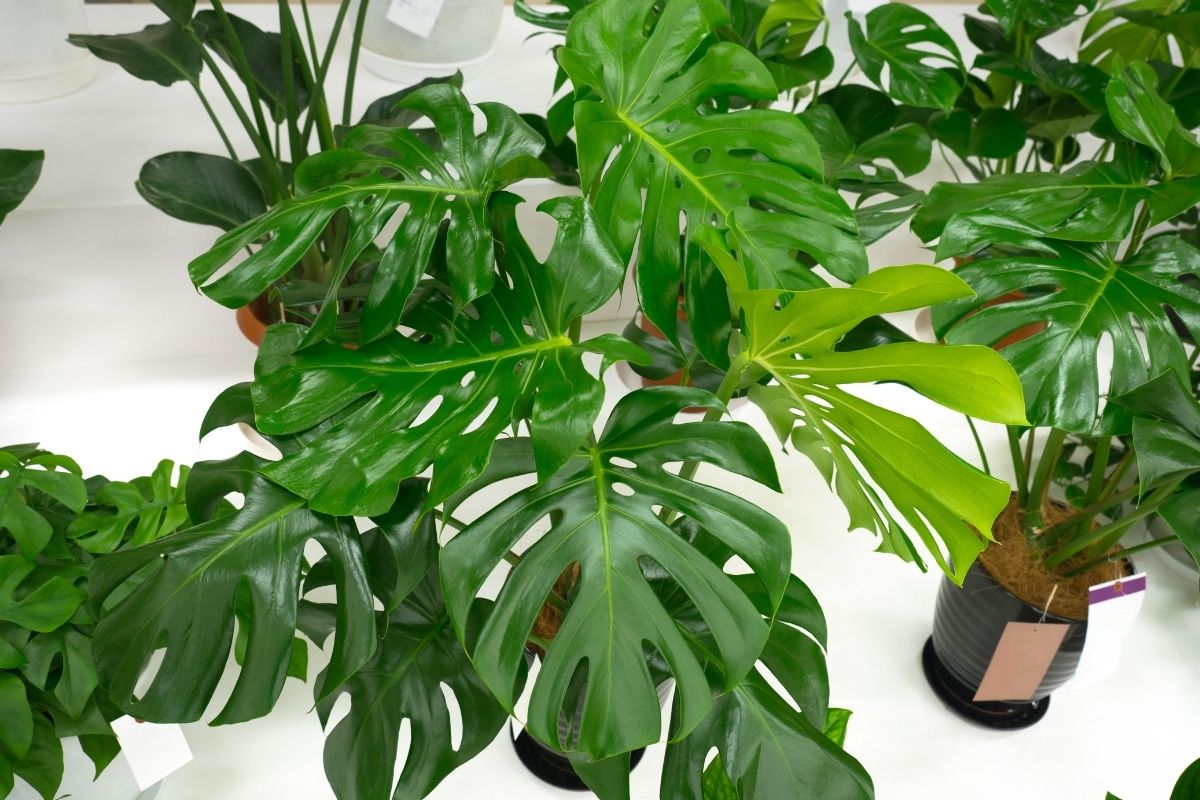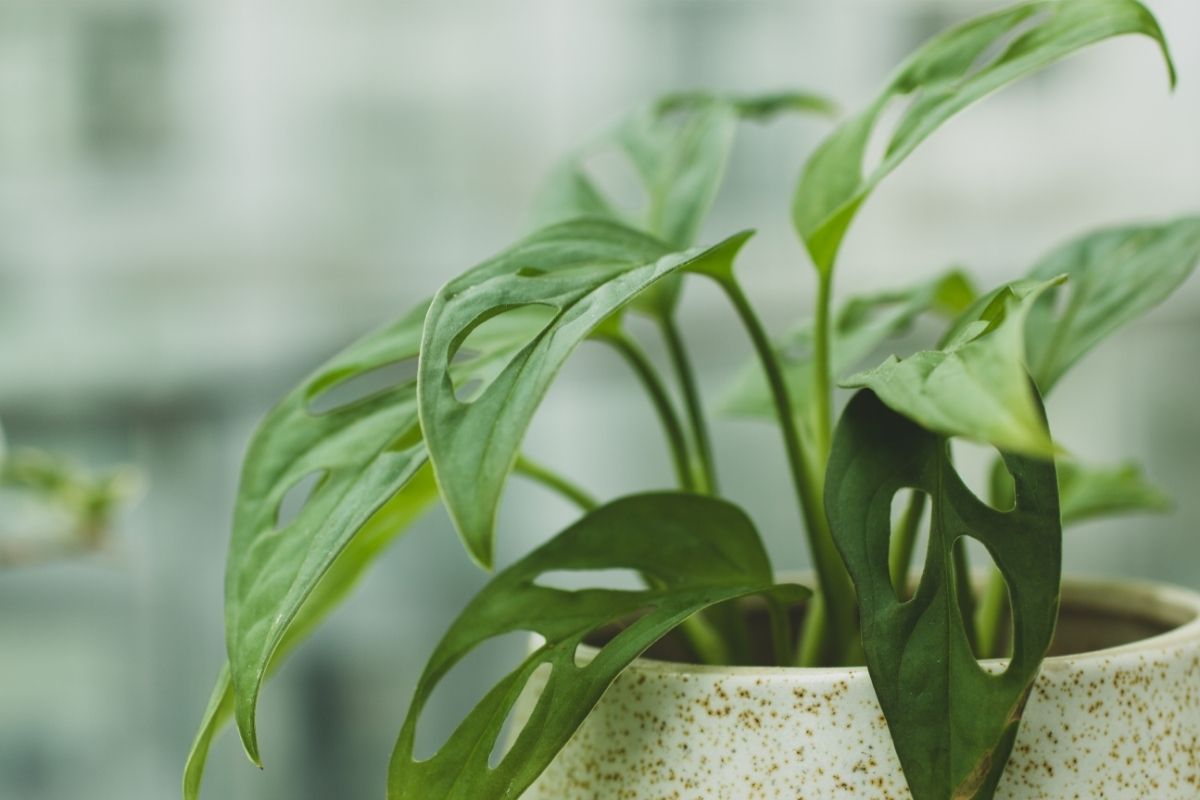Getting the growing conditions right for any new plant can be tricky when you’re a beginner, and it can feel like an overwhelming prospect when you’re first starting out.
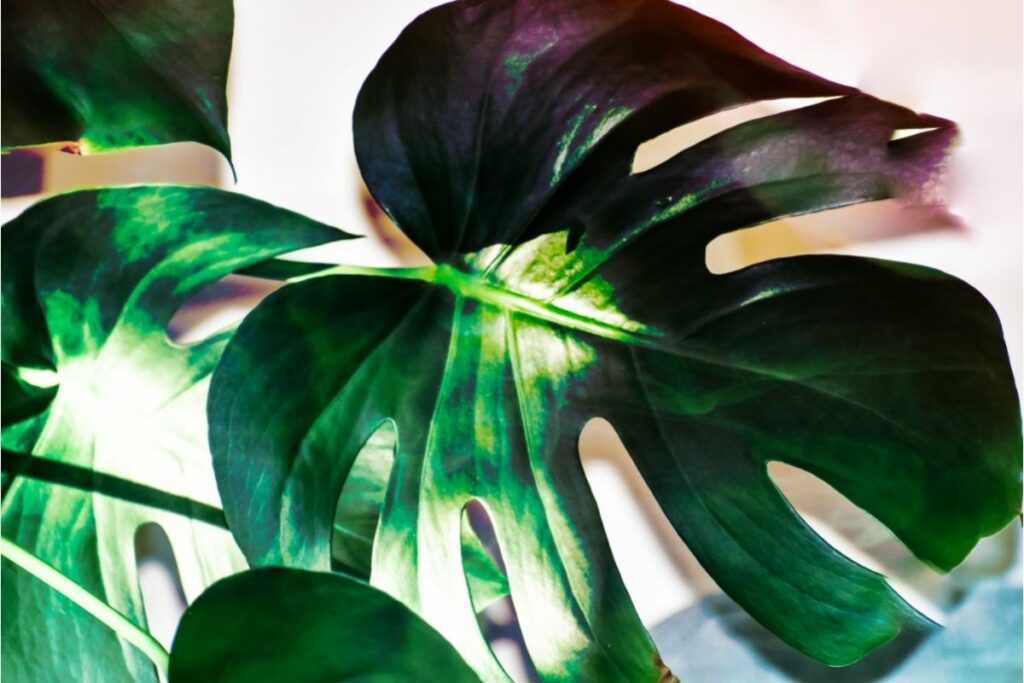
If you’re new to owning a monstera plant, you might be wondering: How much light do monsteras need?
In this article, I will explore some key information about monsteras, including how much light monsteras need as well as signs that your monstera could need more light.
So, let’s get started.
How Much Light Do Monsteras Need?
Monsteras are tropical plants, so they will thrive best in bright, indirect sunlight. As a result, you should keep the plant in a well-lit area to receive sunlight for most of the day.
In terms of hours of sunlight, monsteras should ideally receive around 10 to 12 hours of sunlight each day. This shouldn’t be difficult during the summer months, but can be reduced to 8 to 10 hours during winter. That being said, artificial lighting works as well.
As a general rule, you should keep your monstera near a bright window, but position it so the UV rays aren’t hitting the leaves. To do this, you could always try using a sheer curtain to protect your monstera.
This is necessary, as direct sunlight can actually burn the monstera’s leaves and result in them dropping if you’re not careful.
It’s also worth mentioning that monsteras are pretty hardy and can survive in low light. That being said, if your home doesn’t receive a lot of natural light, you can still grow a monstera.
The only caveat to bear in mind when growing your monstera in low light is that your plant won’t grow as quickly or as large as it would with bright, indirect light.
If you can’t gauge whether your monstera is receiving enough light, more often than not, it will indicate its need for light to you through a variety of different signs.
Signs That A Monstera Needs More Light
If your monstera needs more light, it could be showing a variety of signs that indicate this.
These signs include but are not limited to:
Discoloration Of The leaves
If your monstera’s leaves are beginning to look discolored, and begin displaying patches of yellow or brown, then it’s likely that your plant requires some more light.
When your plant’s leaves turn yellow, more often than not it’s because it’s receiving too much or too little light.
While discoloration of the leaves can also be associated with overwatering your plant, as you will see below, this goes hand in hand with your plant requiring more light.
The Soil Takes A Long Time To Dry Out

Going hand in hand with discolored leaves, if your monstera’s soil seems like it’s wet after a long period of time, then it’s likely that it could benefit from more light.
While wet soil can indicate overwatering, if you haven’t changed anything about your watering schedule, it’s much more likely that your monstera needs a sunnier location.
If the soil is wet for too long, or you plant your monstera in the wrong type of soil, then this can lead to a variety of different problems further down the line. To avoid root rot, make sure that you plant your monstera in well-draining soil and that it is getting enough light.
Your Monstera Is Growing Slowly
This might sound obvious, but if your monstera doesn’t have enough light it will likely grow much more slowly.
Monsteras, especially monstera deliciosa, can grow into monsters with the right growing conditions. With enough light, monstera deliciosa in particular can grow up to an impressive 10 to 15 feet indoors.
While there are many varieties of monstera, if you think that your specific variety of monstera should be bigger than it is, try moving it to a location with more light.
It might take a few tries to figure out where your monstera is happiest in your home, especially when you first become a plant parent and are still learning the ropes.
However, it’s essential to stay in tune with your plant’s growth to ensure it is receiving the light it needs to thrive and adjust accordingly.
Your Monstera’s Leaves Aren’t Splitting
Monsteras are renowned for their iconic split leaves, making them appealing to many plant enthusiasts. However, it’s important to recognize that your monstera needs light to be able to do this.
Bearing this in mind, if your monstera is mature, yet the leaves aren’t spitting, then you can take this as a sure sign that your monstera could be happier in a brighter location.
What If My House Doesn’t Receive Enough Light For A Monstera?
There’s no denying that it can be tricky to find the right light for your Monstera to thrive indoors, especially if you live in a location that doesn’t receive much sun.
In addition to this, during the winter when the nights draw in, limited hours of sunlight can prevent your monstera from growing as well as it otherwise would in the summer.
As I’ve mentioned above, monsteras can tolerate low light, they just won’t grow as big! However, if you live in a home that doesn’t get very much sunlight and you can’t get the lighting conditions right for your monstera, you can always use grow lights!
While sunlight is ideal, artificial lighting works just as well provided you get the light levels right. Using the right kind of artificial lights will reward you with faster growth and bigger leaves for your monstera, so do not despair if your house isn’t as bright as you would like it to be.
If you want to grow a monstera but your home doesn’t have great lighting, using grow lights gives you more flexibility with what you can grow indoors!
There are a variety of grow lights on the market that will provide your monstera the light that it needs. When looking for high quality grow lights, make sure that you do your research before making a purchase, as grow lights can be on the pricier side and you want to ensure that you’re making a solid investment.
In Summary
Hopefully after reading this article you have a better understanding of how much light your monstera needs.
Make sure that you are staying in tune with your monstera’s health, and watch out for any signs that your monstera could benefit from more sunlight.
Good luck taking care of your monstera!
- Best Hanging Plant For Low Light - September 4, 2023
- Best Indoor Plants Florida - August 28, 2023
- Best Plants For Bathroom Smells - August 21, 2023


